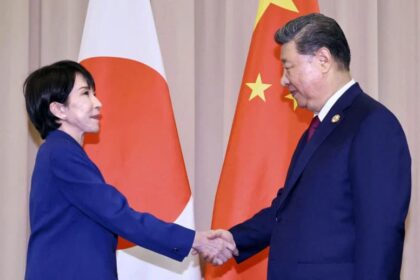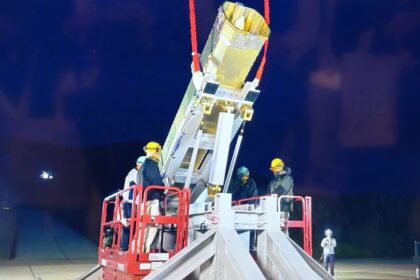China’s Quantum Leap: Zuchongzhi 3.0 Surpasses Global Supercomputers
In a development that has sent ripples through the global technology community, Chinese scientists have unveiled the Zuchongzhi 3.0 quantum processor—a superconducting quantum computer that sets a new standard for computational speed and power. With 105 qubits and a performance that outpaces the world’s fastest supercomputers by a factor of one quadrillion, Zuchongzhi 3.0 marks a pivotal moment in the international race for quantum supremacy.
- China’s Quantum Leap: Zuchongzhi 3.0 Surpasses Global Supercomputers
- What Makes Zuchongzhi 3.0 a Quantum Breakthrough?
- How Does Zuchongzhi 3.0 Compare to Google’s Willow?
- Engineering Innovations: Materials, Architecture, and Error Correction
- Why Does Quantum Computing Matter?
- China’s Quantum Ambitions and Global Implications
- Challenges Ahead: Scalability, Error Rates, and Real-World Use
- The Roadmap for Quantum Computing
- Expert Perspectives and Global Reactions
- In Summary
This breakthrough, achieved by a team at the University of Science and Technology of China (USTC) led by renowned physicists Pan Jianwei, Zhu Xiaobo, and Peng Chengzhi, not only challenges the dominance of U.S. tech giants like Google but also signals a transformative era for science, industry, and national security.
What Makes Zuchongzhi 3.0 a Quantum Breakthrough?
At the heart of Zuchongzhi 3.0’s achievement is its architecture: 105 transmon qubits arranged in a 15-by-7 rectangular lattice, interconnected by 182 couplers. These qubits are fabricated using advanced materials such as tantalum, niobium, and aluminum, which help reduce noise and improve stability—two critical factors for reliable quantum operations.
The processor’s performance was validated using a benchmark known as random circuit sampling. In this test, Zuchongzhi 3.0 completed a complex computational task in mere seconds—a feat that would take the world’s most powerful classical supercomputer, Frontier, an estimated 6.4 billion years to replicate. For comparison, Google’s Sycamore quantum processor, which made headlines in 2019 for achieving quantum supremacy, completed a similar task in 200 seconds, a process then thought to require 10,000 years on a classical machine.
According to the research team, Zuchongzhi 3.0’s single-qubit gate fidelity stands at 99.90%, and its two-qubit gate fidelity at 99.62%, rivaling the best results achieved by Google’s latest Willow chip. These metrics are crucial, as they reflect the processor’s ability to perform quantum operations with minimal errors—a key requirement for scaling up quantum computers for practical use.
Quantum Supremacy and the Global Race
Quantum supremacy, or quantum advantage, refers to the point at which a quantum computer can solve a problem that is practically impossible for even the most advanced classical supercomputers. Zuchongzhi 3.0’s performance in random circuit sampling sets a new benchmark in this domain, surpassing Google’s previous records by six orders of magnitude.
However, it’s important to note that random circuit sampling is a task specifically designed to highlight quantum computers’ strengths. While it demonstrates the raw computational power of quantum processors, it does not directly translate to solving everyday problems. Still, the achievement is a critical milestone, validating the feasibility of quantum computing and reflecting China’s growing research strength in this field.
How Does Zuchongzhi 3.0 Compare to Google’s Willow?
The unveiling of Zuchongzhi 3.0 comes at a time when Google has also introduced its own 105-qubit superconducting chip, Willow. Both chips represent the cutting edge of quantum hardware, but direct comparisons are nuanced due to differences in experimental setups and performance metrics.
Google’s Willow chip reportedly outperforms Zuchongzhi 3.0 in certain qubit quality measures, such as coherence times (T1 and T2) and gate delays. However, Zuchongzhi 3.0’s random circuit sampling experiment, using 83 of its qubits over 32 cycles, achieved a computational gap that classical supercomputers cannot bridge within any reasonable timeframe. Google’s Willow, meanwhile, performed a larger experiment in under five minutes, which would take even longer on classical hardware.
Both chips are close in key parameters like qubit connectivity and gate fidelities, and both teams are pushing the boundaries of what’s possible in quantum hardware. The international competition is fierce, with each side recognizing the commercial, scientific, and military potential of quantum technology.
Engineering Innovations: Materials, Architecture, and Error Correction
The leap from Zuchongzhi 2.1’s 66 qubits to Zuchongzhi 3.0’s 105 qubits was made possible by several engineering innovations. The use of high-purity metals such as tantalum and niobium, combined with advanced fabrication techniques like indium bump flip-chip bonding, has led to more stable and accurate qubits. These improvements are essential for reducing quantum errors, which remain a major challenge in scaling up quantum computers.
Decoherence—the tendency of qubits to lose their quantum state due to environmental interference—has long been a bottleneck in quantum computing. Zuchongzhi 3.0’s architecture, which includes frequency-tunable qubits and topological coupling, achieves superior decoherence performance. The processor’s relaxation time (T1) reached 72 microseconds, and its dephasing time (T2) 58 microseconds, both of which are competitive with the best results worldwide.
Quantum error correction is another critical area of research. Zhu Xiaobo, the chief designer of Zuchongzhi 3.0, explained that the team is actively working on surface code error correction, aiming to increase the code distance (a measure of error correction strength) from 7 to 9 and eventually 11. These efforts are paving the way for large-scale, fault-tolerant quantum computers that can reliably solve real-world problems.
Why Does Quantum Computing Matter?
Quantum computers leverage the principles of quantum mechanics—such as superposition and entanglement—to process information in fundamentally new ways. Unlike classical bits, which can be either 0 or 1, quantum bits (qubits) can exist in multiple states simultaneously. This allows quantum computers to explore vast solution spaces in parallel, making them uniquely suited for certain types of problems.
Potential applications of quantum computing include:
- Cryptography: Quantum computers could break widely used encryption schemes, prompting the development of new, quantum-resistant algorithms.
- Drug Discovery: Simulating molecular interactions at the quantum level could accelerate the development of new medicines.
- Optimization: Quantum algorithms could solve complex optimization problems in logistics, finance, and manufacturing far more efficiently than classical computers.
- Artificial Intelligence: Quantum machine learning could enable breakthroughs in pattern recognition and data analysis.
While these applications remain largely theoretical for now, each advance in quantum hardware brings the field closer to practical impact.
China’s Quantum Ambitions and Global Implications
The unveiling of Zuchongzhi 3.0 is not just a scientific milestone—it’s a statement of national ambition. China and the United States are the two leading powers in quantum research, each investing heavily in talent, infrastructure, and strategic applications. The U.S. Department of Defense’s 2024 China Report highlights China’s vigorous development of quantum technology for uses ranging from secure communications to advanced radar and navigation systems.
China’s progress in both superconducting and photonic quantum computing (as seen in the Jiuzhang system) demonstrates a commitment to mastering multiple technical routes. The Zuchongzhi 3.0 project, published in the prestigious journal Physical Review Letters and praised by peer reviewers as a significant upgrade over previous devices, reflects a broader national strategy to lead in next-generation technologies.
As one expert noted,
“Quantum advantage represents a critical foundation for near-term applications and scalable quantum error correction, both essential for the future of practical quantum computing.”
The international race for quantum advantage is about more than scientific prestige—it has profound implications for economic competitiveness, cybersecurity, and even military power.
Challenges Ahead: Scalability, Error Rates, and Real-World Use
Despite the remarkable achievements of Zuchongzhi 3.0, significant challenges remain before quantum computers can be widely deployed. Scaling up the number of qubits while maintaining high fidelity and low error rates is a daunting engineering task. Even small increases in error rates can render quantum computations unreliable, especially as circuits become more complex.
Another challenge is the limited practical relevance of current quantum benchmarks. Random circuit sampling is an important proof of concept, but researchers are now focused on developing quantum algorithms that can solve real-world problems in chemistry, materials science, and optimization. Advances in classical algorithms could also narrow the gap, as seen in past quantum supremacy claims.
The next phase of quantum hardware development will emphasize error correction and fault tolerance. Only by overcoming these hurdles can quantum computers move from laboratory demonstrations to practical tools that transform industries.
The Roadmap for Quantum Computing
Experts in the field have outlined a three-stage roadmap for quantum computing:
- Demonstrate Quantum Supremacy: Achieve computational tasks beyond the reach of classical supercomputers (as Zuchongzhi 3.0 has done).
- Develop Practical Quantum Applications: Build quantum simulators and specialized devices with hundreds of controllable qubits to tackle real-world problems.
- Achieve Universal Fault-Tolerant Quantum Computing: Create programmable, general-purpose quantum computers with robust error correction, potentially 10–15 years away.
Zuchongzhi 3.0’s success marks the transition from the first to the second stage, with researchers now focusing on error correction, scalability, and practical applications.
Expert Perspectives and Global Reactions
The scientific community has responded enthusiastically to the unveiling of Zuchongzhi 3.0. Peer reviewers described the research as “benchmarking a new superconducting quantum computer with state-of-the-art performance.” Media outlets and technology analysts have highlighted the processor’s potential to revolutionize fields as diverse as cryptography, drug discovery, and artificial intelligence.
However, the achievement has also raised concerns among international observers, particularly in the United States. As one report noted,
“China’s unveiling of the Zuchongzhi 3.0 quantum processor represents a major leap in quantum computing and poses a significant challenge to established players like Google’s Willow chip.”
With both China and the U.S. racing to achieve practical quantum advantage, the stakes are high—not only for scientific progress but also for economic and national security.
In Summary
- China’s Zuchongzhi 3.0 quantum processor, with 105 qubits, sets a new benchmark in quantum computational advantage, outperforming the world’s fastest supercomputers by a factor of one quadrillion.
- The processor’s architecture and engineering innovations enable high fidelity and stability, crucial for scaling up quantum computers.
- Zuchongzhi 3.0’s performance in random circuit sampling surpasses Google’s Sycamore and is competitive with Google’s latest Willow chip.
- The achievement marks a significant milestone in the global race for quantum supremacy, with China and the U.S. as leading competitors.
- Challenges remain in error correction, scalability, and developing practical quantum applications, but Zuchongzhi 3.0 brings the field closer to real-world impact.
- The international implications of quantum computing are profound, affecting science, industry, and national security.












